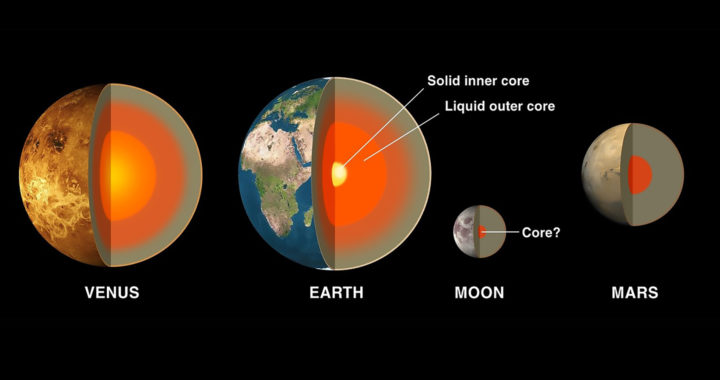The internal structure of the Earth is called the core. It is one of the three primary mechanical structures and consists of the so-called outer core and the inner core. This structure is also considered the hottest with a temperature ranging from 2700 to 4200 degrees Celsius in the outer part and from 5100 to 5400 degrees Celsius in the inner part.
Properties and Composition of the Core: The Outer Core and The Inner Core
Scientists have explored and analyzed the internal structure of the Earth based on observations of topographical features, the study of underwater depth or bathymetry, observations of rock in outcrop, analysis of samples brought to the surface by volcanic activities, analysis of seismic waves, and measurements of gravitational and magnetic fields.
Key Properties
Note that the core has two separate and more specific structures. Each has its own properties. Take note of the following:
• Properties of the Outer Core: Analysis of the seismic waves that pass through the Earth and other measurements have revealed that the outer core is liquid. Note that these waves are not transmitted to this internal structure and scientists believe that there is not enough pressure to keep it solid. Estimates also reveal that its temperature ranges between 2700 to 4200 degrees Celsius. The fluid state of the structure also causes convection currents that are responsible for generating the magnetic field of the Earth.
• Properties of the Inner Core: The inner core is solid and it influences the fluid and electric currents generated in the outer core and thus, the generation of the magnetic field of the Earth. It has an estimated radius of 1221 kilometers and represents about 19 percent of the total radius of the Earth. The estimated temperature is between 5100 and 5400 degrees Celsius with pressure ranging in from 330 to 360 gigapascals and a density of about 13.0 kg/L at the center and 12.8 kg/L at the surface.
Composition
There is no exact way for scientists to accurately determine the composition of the core. There is an accepted but still debated theory that both its outer and inner parts are made of an iron-nickel alloy. This theory also explains how the magnetic fields of the Earth are generated from its innermost mechanical structure.
Note that the theory is largely based on the relative presence of different chemical elements in the Solar System, as well as the established theory of planetary formation, and in consideration of the limitations inferred from the chemistry of the volume of the Earth.
It is also worth mentioning that the density of the outer core tells that it is not made up of iron or an iron-nickel alloy. Both iron and iron-nickel alloys have higher densities. This leads scientists to hypothesize that it is also composed of light elements with low atomic numbers such as oxygen, silicon, and sulfur. The same has been hypothesized for the inner core.
The prevailing theory that iron is the main element that constitutes the core comes from two notable arguments: iron is the only element that closely matches its seismic properties, and this element is sufficiently abundant in the universe.
Understanding Why The Core Is Hot: Temperature From The Deep Earth
Scientists derive their estimates of the temperature of the innermost structure of the Earth from the known melting behavior of iron at ultrahigh pressures.
However, to understand why the core is hot, it is important to underscore the three sources of heat from the deep earth:
• Leftover heat from planetary formation;
• Frictional heating resulting from the liquid core solidifying near the boundary of the inner core or denser material sinking to the center of the planet; and
• Heat from the decay of radioactive elements.
Note that the formation of Earth is characterized primarily by the collision of rouge objects in space billions of years ago. When large objects collide, they generate large amounts of heat. A large amount of this heat is retained. The heat emanating from the deep Earth represents a longstanding and ongoing part of the entire cooling-off process.
The Earth is essentially cooling from the inside out. It also takes a long time for this heat to escape from the innermost part and move to the outer layers.
Contributing to this primordial leftover heat is the descent of dense material to the innermost part of the Earth. This process can generate heat of up to 1650 degrees Celsius. Radioactive heating is another source of heat but its accurate contribution remains unknown.





